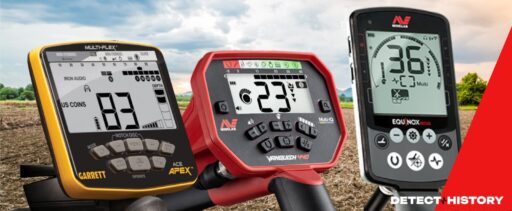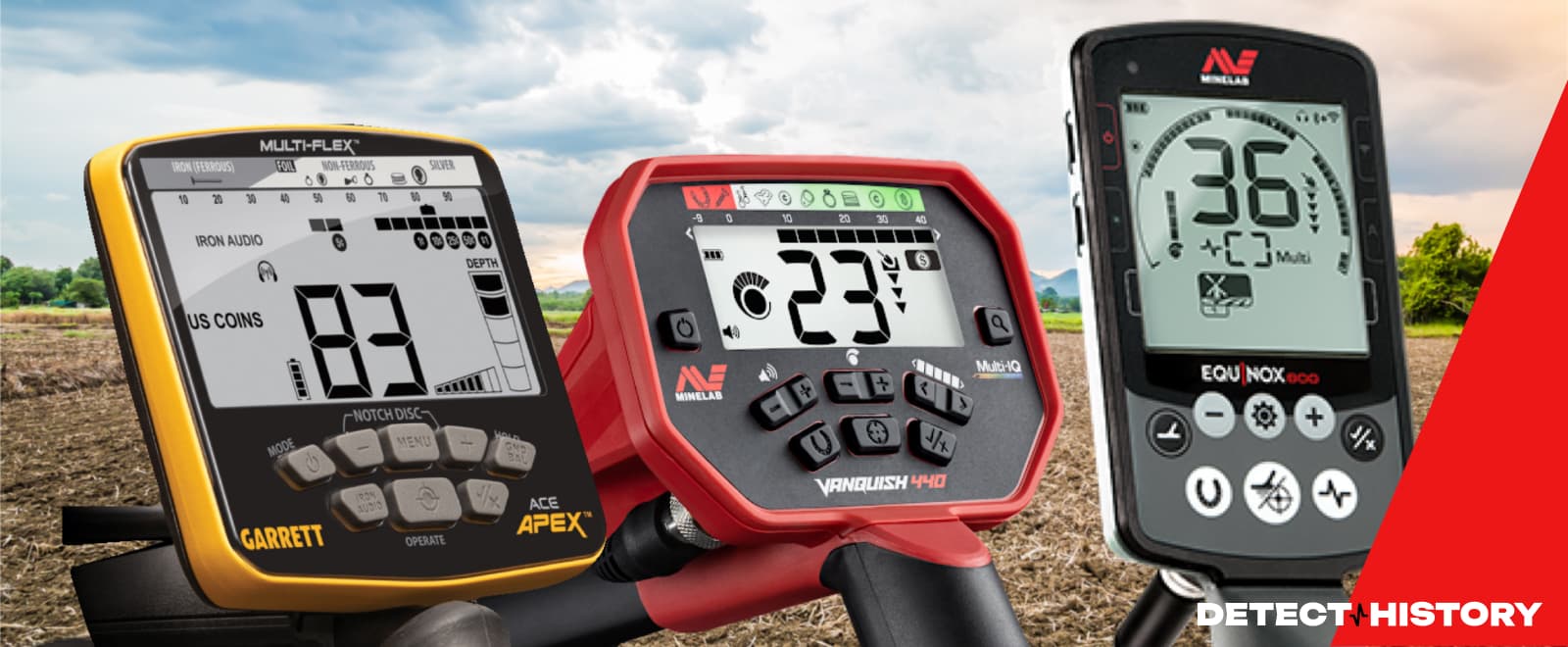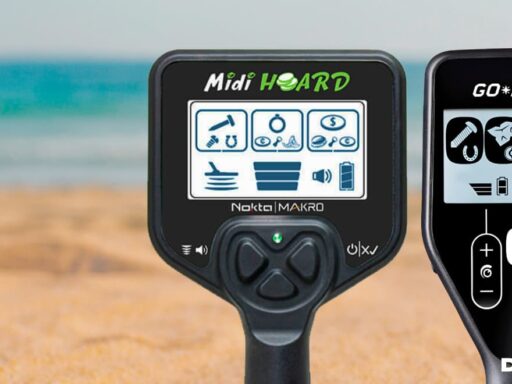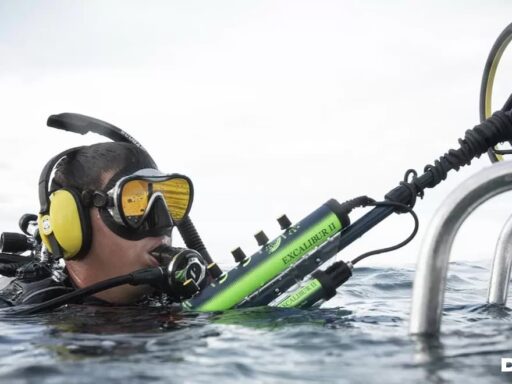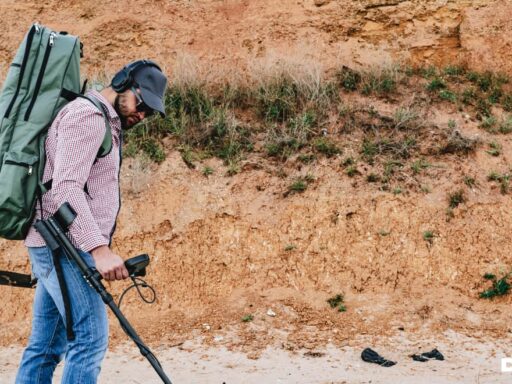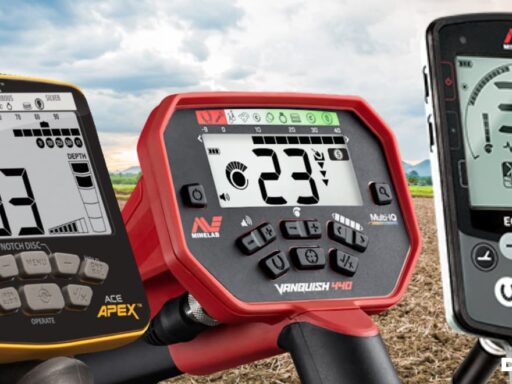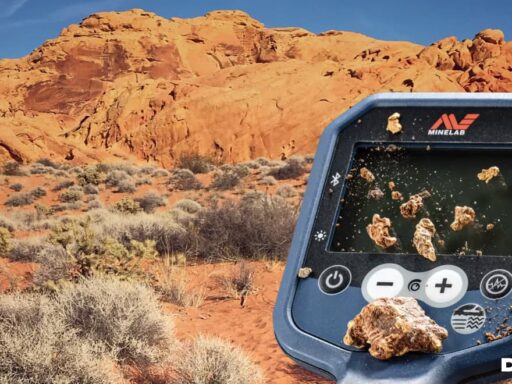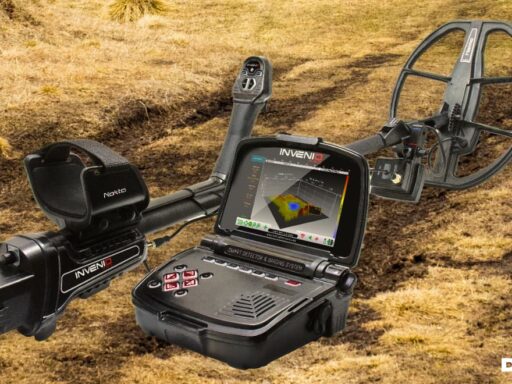Having spent nine years metal detecting in the fields, and testing new metal detectors for hours, I have found out that the best metal detector is the one that meets the user’s skills and needs.
Below are my recommendations for the most beginner-friendly Nokta Makro Simplex, the most efficient Garret ACE Apex for medium level, and the top-notch combination of features Nokta The Legend. I also provide detailed metal detector reviews within a range of criteria.
The Best Metal Detector For the Money 2024
| Rank | Metal Detector | Highlight | Rating |
|---|---|---|---|
| 1 | Nokta The Legend | Best Metal Detector Under $700 | 9.8 |
| 2 | Minelab Equinox 800 | Best All-Round Metal Detector | 9.7 |
| 3 | Nokta Simplex | Best Metal Detector Under $300 | 9.7 |
| 4 | Minelab Vanquish 440 | Best Metal Detector Under $500 | 9.6 |
| 5 | Garrett AT Max | User’s Choice | 9.5 |
| 6 | Minelab Equinox 600 | Best for Coins and Relics | 9.5 |
| 7 | Garrett ACE Apex | Best Entry-Level MF Detector | 9.4 |
| 8 | Minelab CTX 3030 | Best Professional Metal Detector | 9.4 |
| 9 | Garrett AT Pro | Best All-Terrarium Metal Detector | 9.3 |
| 10 | Garrett ACE 300 | Best Entry Level Metal Detector | 9.1 |
| 11 | Fisher F75 | Best Metal Detector for Coins | 9.0 |
| 12 | Bounty Hunter Tracker IV | Best Budget-Friendly Metal Detector | 8.8 |
| 13 | Fisher F22 | Best Metal Detector for Kids | 8.7 |
The key complication of choosing a metal detector is to grow aware that price is not the main criterion for the detector’s efficiency.
The key criterion is the user’s skill and experience, then it is the user’s awareness of what targets and locations are available to them, and the ability to identify what tech specs and features of a metal detector will be able to meet the user’s requirements in the best manner. This is why I offer this review of the best metal detectors.
Buying the most expensive device to get the best results doesn’t work for metal detectors, and this is why reviews and research are so important. Based on my own extensive experience, I choose to recommend some of the most reliable metal detector brands listed below.
These brands deliver what they promise for every product released, and guarantee decent performance through the years. Learning more about each brand takes a beginner-level detectorist a step further towards understanding precisely what they really need, and what will work for them.
Best metal detector brands are:
- Garrett Metal Detectors
- Minelab Metal Detectors
- Nokta Metal Detectors
- Fisher Metal Detectors
- Bounty Hunter Metal Detectors
Based on what the best brands offer, I have developed a list of my own most crucial criteria, like frequency, search coil characteristics, discrimination, etc. This list of criteria allows me to quickly evaluate any metal detector as soon as I learn its tech specs.
My educational guides and reviews are also based on this list, and you can take advantage of them. Also, my most recommended detectors are listed below.
Nokta The Legend – Best Metal Detector Under $700
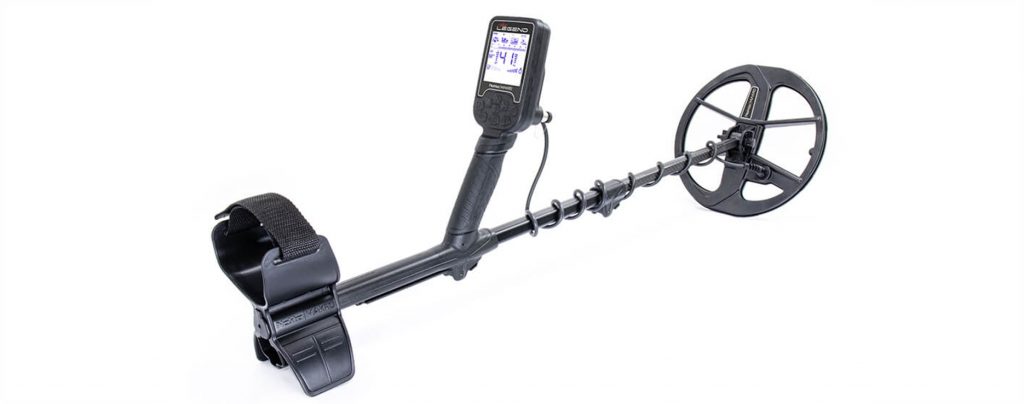
Nokta The Legend metal detector is one of the newest detectors, released in 2021, that uses Multi-Frequency technology. It has five different frequencies that can be used together or in a single frequency mode. In terms of frequency technologies, The Legend is literally unique (at least within its price category), offering frequency shift, wet and dry search multi-frequency options, salt water mode with special discrimination, several preset search modes, and custom modes.
Ground balance can be used in Automatic, Manual, or Tracking mode. High Recovery speed and 30 sensitivity levels allow the user to make the most out of the Multi-Frequency technology in The Legend.
Advantages:
- Smart Multi-Frequency technology;
- Waterproof up to 10 feet;
- Tons of additional features;
- 3 years warranty;
- USB charging;
Minelab Equinox 800 – Best All-Round Metal Detector
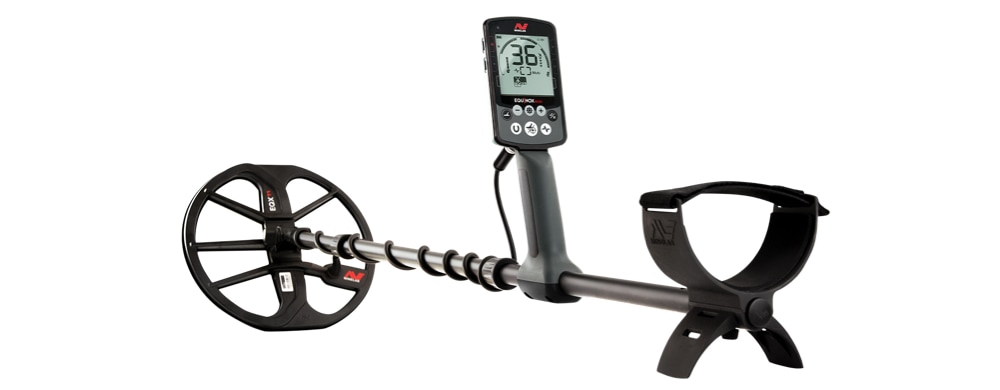
This is a Multi-Frequency machine offering five frequencies from low to high, which makes it able to spot variable targets. The frequencies can be used individually, or all at once. The DD 11 inches coil is an all-purpose size and shape for different depths and targets.
Plus, the detector is IP68 waterproof, which increases its durability against weather, and the key features provide a wide range of activities for the user. Price is probably the least user-friendly indication, but we cannot expect a low price for a high-quality metal detector.
Advantages:
- Multi-Frequency technology enables a more productive and faster search;
- Waterproof up to 10 feet;
- 6 Search modes for operation in various locations;
- Suitable for gold prospecting which is a rare feature;
- Powerful rechargeable battery (USB charging);
- Lightweight and convenient for long search hours;
Nokta Simplex – Best Metal Detector Under $300
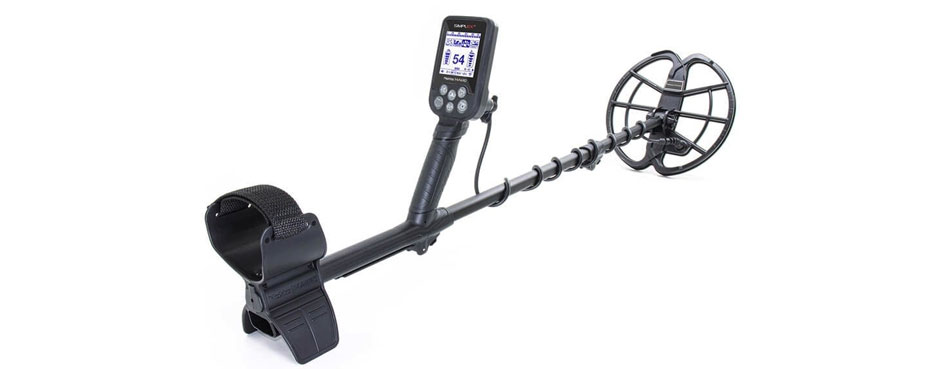
Nokta Simplex+ is one of the easiest metal detectors to master for a newbie, and yet, it is extremely efficient. This treasure hunter metal detector features a single universal frequency in VLF technology, combined with an 11” DD coil and waterproof rank up to 10 feet, which makes it pretty much multifunctional.
The key features include Manual Ground Balance, Depth Indication, Notch Discrimination, and frequency shift to avoid electromagnetic interference. This metal detector is easy to use and it offers top quality for its price.
Additional features and functions include four Search modes including Beach mode with Saltwater Discrimination, compatibility with wireless headphones, and updatable software.
Advantages:
- Best metal detector under $300;
- Waterproof up to 10 feet;
- Updatable software;
- Lightweight;
- Compatible with other coils;
- Affordable price;
- Easy to use even for newbies;
- The battery is rechargeable via USB;
Minelab Vanquish 440 – Best Metal Detector Under $500

Having a Minelab metal detector machine for affordable money is a good option for beginner detectorists. The technology applied is Multi-IQ with three frequencies. The frequency range is customizable and combined with five Search modes, it provides decent flexibility in operation.
The coil is 12”x9” DD, and other coils are also compatible. This multi-frequency metal detector is waterproof and lightweight. It has a Depth indicator and Fixed Ground Balance.
Being “the middle brother” in the Vanquish series, 440 is okay for total noobs and for those with some expertise alike. Minelab provides high quality, and all features available make this very machine handy and affordable.
Advantages:
- Multi-IQ technology;
- 12”x9” DD search coil;
- Other compatible coils are available;
- Fixed Ground balance;
- Pinpoint mode is included;
Garrett AT Max – User’s Choice
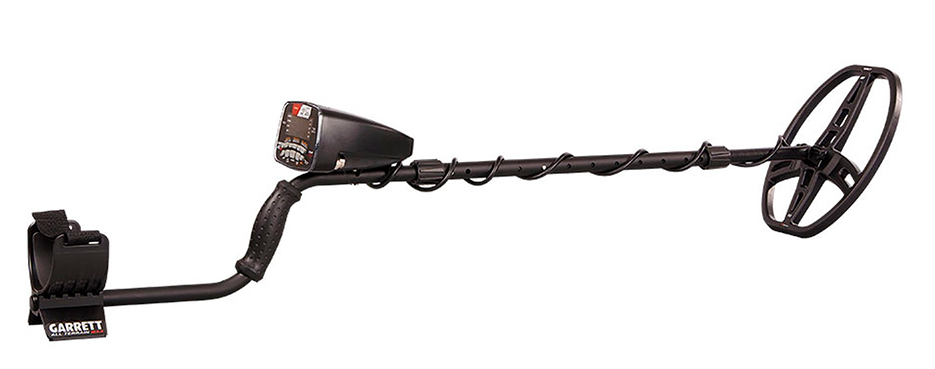
This metal detector by Garrett features only one frequency, but this is a universal one suitable for different targets and depths.
The detector’s key features are Manual / Automatic Ground Balance, Notch Discrimination, and Frequency Shift. While its price is not particularly budget-friendly, Garrett AT Max is very easy to manage, especially for a machine with this range of functions.
Additional features are Depth Detection and high-quality Discrimination. The detector is equipped with a DD coil and is compatible with wireless headphones. Also, other coils by Garrett can be used with this model.
Advantages:
- Waterproof up to 10 feet
- Z-Lynk Wireless Technology (compatible with wireless headphones)
- Compatible with other Garrett coils
- Easy to use even for a newbie
Minelab Equinox 600 – Best for Coins and Relics
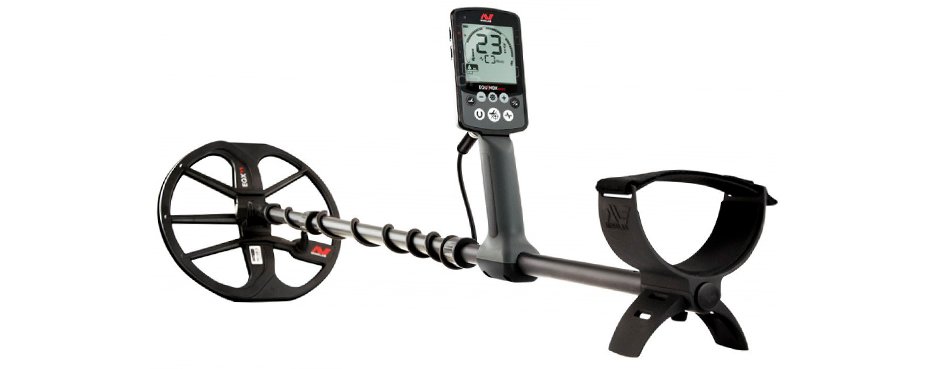
This is one of the professional treasure hunting metal detectors which has four frequencies – 5 kHz, 10 kHz, 15 kHz, plus Multifrequency.
There are three search modes, and the coil is 11” DD type. Depth Indication and Manual option for setting Ground Balance make this metal detector handy and quite universal. It is waterproof up to 10 feet, and at the same time, it is not really heavy.
The Discrimination quality and speed make it easier to filter out the trash, while manual Noise cancellation and an LCD display will be handy both underwater and on the ground.
Advantages:
- Multi-IQ technology
- Search custom modes are available
- Updatable software
- Noise cancellation
- Works well on all locations
- Other coils are compatible with the detector
- Waterproof up to 10 feet
Garrett ACE Apex – Best Entry-Level MF Detector
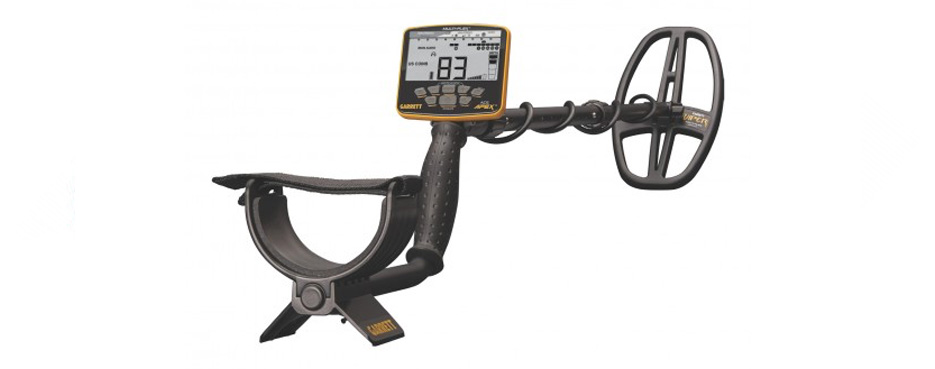
This Multi-Frequency metal detector, with operation frequencies ranging from low to high, allows using each frequency separately, and they all can be used simultaneously.
The coil is 11” DD and it is waterproof, but only the coil. The machine has Depth Indication and Ground Balance, plus six Search modes, one of which is Custom. Garrett Ace Apex is durable and easy to use. And, compared to the previous position in the category, its price is more user-friendly!
There are eight iron Discrimination segments, Target Notch Discrimination, and five levels of depth indication. Additional features include compatibility with wireless headphones, Frequency shift, and Noise cancellation.
Advantages:
- Best metal detector under $500
- Truly multi-frequency detector (you can use frequencies separately or together)
- Multi salt frequency adapted for highly mineralized waters
- Offers frequency shift for each frequency
- Attractive price
- Lightweight
- The battery is rechargeable via USB
Minelab CTX 3030 – Best Professional Metal Detector
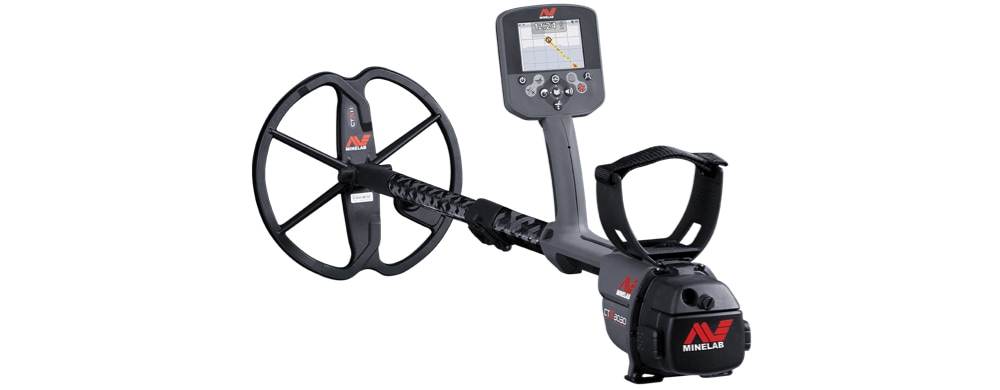
This metal detector was released in the year 2012, but it still stays in some of the top positions in the niche. One of its main features is high-quality discrimination which makes this item universal and suitable for any type of search. Its water resistance index is IP68. Another disadvantage is the price.
This detector provides a big multicolor display, GPS navigation built-in, a new type of coil, and also wireless headphones. Its GPS navigation feature is extremely convenient since the user sees the route directly on the screen and can operate more efficiently, saving time and effort.
Advantages:
- Most expensive metal detector but very efficient
- Multi-Frequency technology
- 28 operating frequencies
- Waterproof up to 10 feet
- The software can be updated online
- Wireless machine
- Big full-color LCD display
Garrett AT Pro – Best All-Terrarium Metal Detector
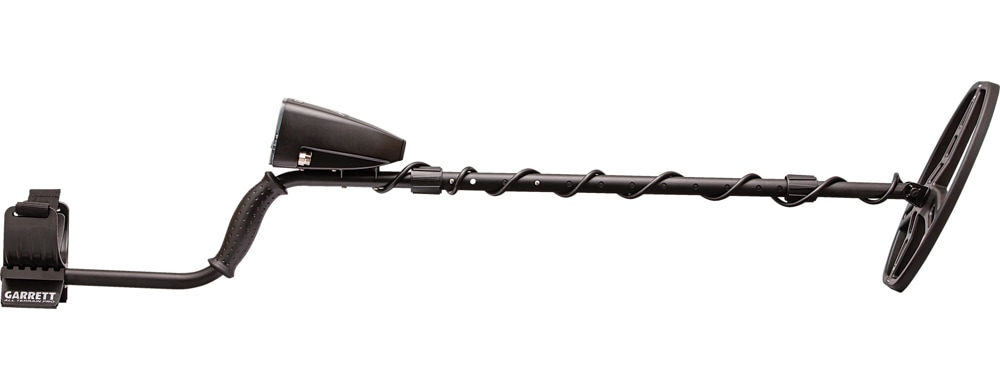
This waterproof metal detector with one operating VLF and a DD search coil can be used underwater up to 10 feet, which makes it very weatherproof for on-land search, and also pretty versatile for the majority of locations where the underwater search is suggested.
Garrett AP PRO has six search modes plus Pinpoint mode, and it boasts many useful additional features like frequency shift, Iron Audio, etc. This metal detector suggests some considerable skills and experience for using the tech specs efficiently, but it is definitely worth buying for a productive underwater search.
Advantages:
- Waterproof up to 10 feet
- Efficient for gold prospecting
- High Recovery speed
Garrett ACE 300 – Best Entry Level Metal Detector
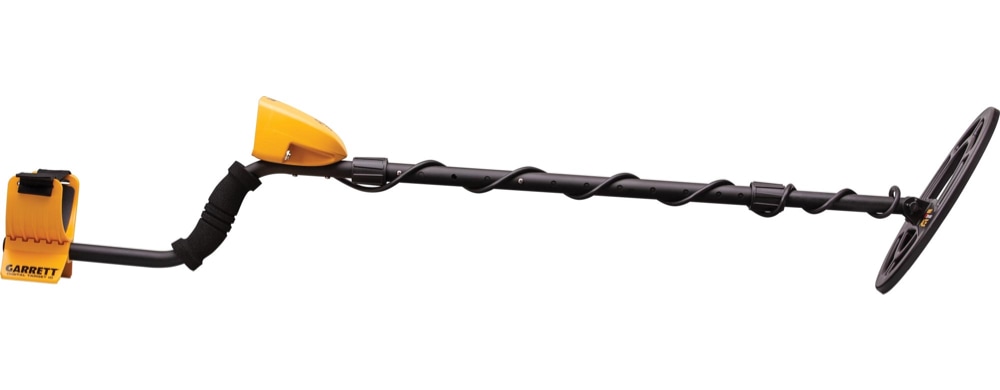
Garrett ACE as a series is generally handy, user-friendly, and effective, so beginners will find Garrett ACE 300 a good choice for entering the hobby – even including its price which is pretty affordable.
The detector operates on VLF Single Frequency, with five Search modes and a Mono coil. The depth indication is present, and the Ground balance is fixed (which makes it convenient as the best starter metal detector).
This is an excellent budget-friendly machine, and even though its features are not very complicated, this best budget metal detector will bring finds and allow the user to learn and develop their skills.
Advantages:
- Lightweight, easy to use, comprehensive settings
- Five Search modes
- Fixed Ground Balance
- Affordable price
Fisher F75 – Best Metal Detector for Coins
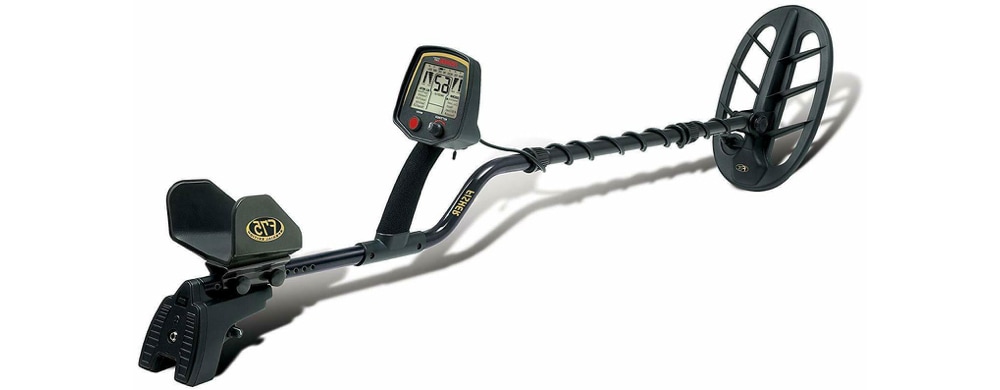
Fisher F75 is a fitting metal detector for those who want to enter the hobby but with a reliable yet comprehensive detector at hand. Released by one of the oldest manufacturers in the niche, Fisher F75 fits the beginner to medium level of skills.
VLF single frequency metal detector with 11” DD coil shows the seamless performance when it comes to spotting coins and relics in different locations, probably with the exception of salt water. Only the coil is waterproof, by the way. There are two search modes and an impressive 5 years warranty which makes this metal detector almost eternal for a beginner.
Advantages:
- Pinpoint mode
- Additional search coils
- Frequency shift available
Bounty Hunter Tracker IV – Best Budget Friendly Metal Detector
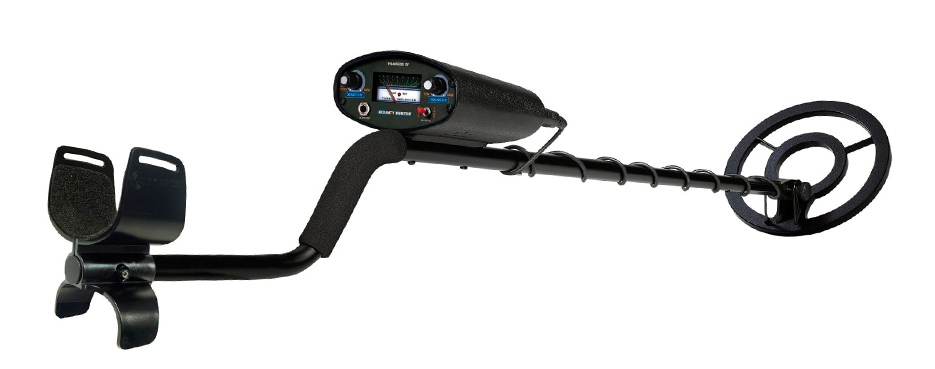
This metal detector has tons of positive comments from users. At the same time, it is super easy to use, plus you get it all for an adequate price. The only disadvantage is too few settings, so the variability is comparatively low.
The weight of the machine is 4,2 lbs which is a bit heavy, but the length can be adjusted. It is powered by two 9V alkaline batteries, so no fuss with the AA ones. It offers one frequency (6,6 kHz), three search modes, and the depth of reach is up to 2 feet. Also, there is decent discrimination, automatic ground balance, plus adjustable sensitivity.
Advantages:
- Best metal detector under $200
- 5 years warranty
- Affordable price
- 3 search modes
- Very easy to use, even for younger kids
Fisher F22 – Best Metal Detector for Kids
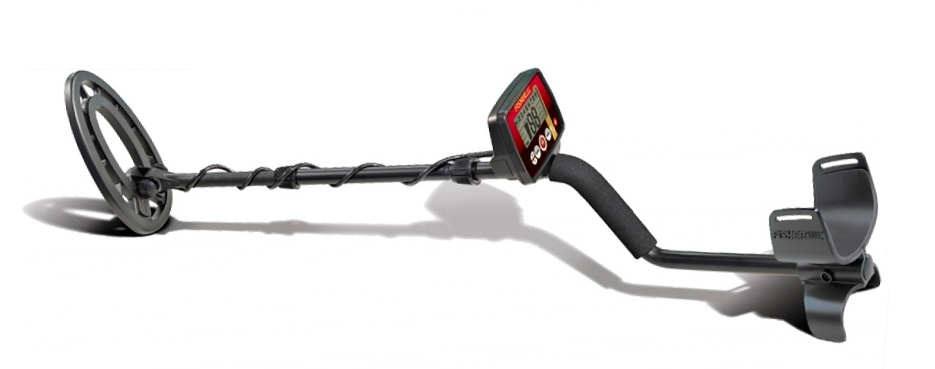
Fisher F22 is very simple to master, and yet it is efficient enough to find coins and relics, even if the user is a complete beginner or even a kid. This metal detector is the middle of the range model of the Fisher series released back in 2015, but even today, it is still good enough for simple hobby detecting.
This is the best budget metal detector that is powered by two AA batteries and has a battery life of around 25 hours. It is weatherproof and can be used in the rain or fog, or for searching in the wet grass, but it is not waterproof.
Advantages:
- Affordable
- Pinpoint mode included
- 4 Search modes
- Fixed Ground Balance
Things I Consider When Choosing The Best Metal Detector
Choosing a metal detector can be a hard task for beginner to medium level treasure hunters, mostly because people may not yet be aware of their own skills and needs, and therefore they cannot evaluate the tech specs and features of a metal detector correctly. Just knowing the tech specs of a detector is not enough, because the potential user should evaluate them with his or her skill, experience, planned targets, planned locations, possible search conditions, etc.
Reading metal detectors reviews is a must for a detectorist almost regardless of the level of skill because reviews, comments, and other people’s feedback allows getting a bigger picture and a better idea about the correspondence of a metal detector’s declared functions to its actual performance, and the correspondence of the actual performance to the level of mastery, or to the search conditions in the field.
The short guide below discusses the things I believe are crucial when choosing among many metal detectors. I encourage all wannabe detectorists to learn it carefully, and also reach to my bigger guides and probably for the Time to Detect book. Being aware of the nuances I discuss there will help you make a more informed choice, save your time and money, and get better results in the field faster.
Depth and Discrimination
Discrimination prevents the user from digging every piece of trash. Without discrimination, the equipment equally reacts to any metallic object in the ground. With discrimination, the metal detector ignores at least pieces of trash and also places with highly mineralized soil.
The more powerful the discrimination, the more potentially valuable targets are spotted.
As for the depth of reach, it is generally believed that the deeper the better. However, not every detectorist needs the deepest reach, because everybody hunts for different objects. Modern jewelry and ancient relics do not often lay in the same depth. The level of ground mineralization influences the depth of reach as well, even for pro metal detectors.
Frequency and Features
Frequency is one of the key specifications because frequency generally defines what kind of objects, if any, the treasure hunter will be able to spot. Lower frequencies reach deeper into the ground and work better with bigger objects.
Higher frequencies generally have a more shallow reach, but work nicely with small targets. Also, different frequencies react differently on ferrous metals and precious metals.
So, one has to choose the frequency mainly depending on the type of targets one suggests to spot, and the type of detector they use: a hobby metal detector will offer less functional frequencies and features than a pro one.
All Purpose
Whether a detector is all-purpose or not indicates whether you will be able to use it in many locations for many targets, or only for specific ones. The best all round metal detector is expected to function well in various locations and find targets various in both size, depth, and quality.
I believe the All-Purpose metal detectors should have the Multi-Frequency technology and should be waterproof (not just weatherproof), and offer several settings: manual Ground Balance, Frequency Shift, and high-quality Discrimination variations (like Adjustable Iron Volume, Notch Discrimination, etc.) But again, not everyone needs an all-purpose detector; and they can also be costly.
Price and Durability
There is a delicate balance between a cheap but ineffective instrument that will break easily, and an expensive, effective, but hard to manage instrument. Therefore, the best decision is to buy a quality metal detector that corresponds to the level of skills of the user but always looks a bit more expensive than a bit cheaper. If you would like to invest in metal detecting, invest in quality and durability in the first place.
A combination of metal detector price and features makes the detector more or less durable. A waterproof metal detector is likely to serve longer than a non-waterproof, and a wireless one is less vulnerable to breaks than a wired one.
Feedback from the Fields
If you read all the reviews, watch videos, and still ask yourself “what is the best metal detector”, you should look for feedback from the fields. In other words, look for the opinions of real users from all over the world.
It makes sense to visit forums or social media groups and see what people say about this or that metal detector, what advantages and disadvantages they have noticed really using it, and whether they believe it is a worthy machine. Obviously, every brand will describe all the strengths of its products, but real users give real feedback which is invaluable.
Buyers Guide on How to Choose a Metal Detector
There are several aspects one should consider when choosing a metal detector. The very first aspect is price, of course. Most newbies believe the more expensive, the better. However, this is not straightforward like that.
Of course, more expensive professional metal detectors offer more possibilities, but the truth is one needs relevant experience and skills to tune all the countless settings. Better take a more affordable option that is noob-friendly.
The next aspect is technical specifications and features. Choose the specs and features that correspond to your level of skill. There are different types of metal detectors, plus one must think of potential locations and potential targets. You have to sit down and think about what locations will be available for you. This defines whether you need a waterproof tool, you need headphones, or you need a bigger coil or lower frequency.
Next, what kind of targets are you after? Knowing your targets, you are able to opt for very specific features, and the tool you buy will really meet your needs. All these considerations mean you have to know more about search types.
Combined together, the main aspects to pay attention to are frequency, search coils, ground balance, search modes, discrimination, and eventually the user’s experience and skills.
Frequency
Frequency is a critical indicator. There are single-frequency, multi-frequency, and pulse induction metal detectors. Please mind that a single frequency does not mean that the machine has only one frequency; it means it operates with one frequency at a time but can have several operational frequencies.
Lower frequencies provide a better depth of reach, and are good for spotting high conductivity targets; on the other hand, lower frequencies are not effective for small targets like coins. Higher frequencies are cool for small targets, and also for gold. Also, they provide better performance closer to the ground surface.
MF – Multi-Frequency
MF detectors have more than one operating frequency. Some allow to apply all or several frequencies at once, others allow to change the frequencies one by one, choosing one of the many available frequencies. The price for MF detectors usually exceeds $900. Multi-Frequency metal detectors are very efficient because they can be versatile enough for different tasks, and also perform very specific tasks like saltwater search.
VLF – Very Low Frequency
VLF detectors’ operating frequency is below 12 kHz. Those metal detectors are good for detecting coins, jewelry, and relics. The majority of modern metal detectors operate in VLF; their price varies within $900 depending on additional features. Beginner detectorists are recommended to choose devices with VLF for efficient search, but without a very steep learning curve that other technologies suggest.
PI – Pulse Induction
PI detectors detect the target by sending impulses. The volume of the sound signal depends on the size and depth of the target. PI metal detectors are a good choice of gold nuggets, and generally specific targets in highly mineralized locations like hot soils, salt water, etc. Not all detectorists need Pulse Induction machines though, because these devices are pretty narrow in their range of versatility.
Search Coils
The coil is perhaps the most crucial element of the metal detector structure and functionality. The coil emits signals and gathers signals. Difference sizes and different forms of coil function differently.
Some brands offer a bunch of coils one can buy separately, others do not. Some models are compatible with several coils while others are not. Remember that the more compatible coils are available for a particular tool, the better because, with the same shaft, you get more variability given by each separate coil. This means you can have one machine, but search on different locations and for different objects, simply changing a coil.
Concentric Coils
Such coils have a larger transmit coil on the outside and a smaller receiving coil on the inside. Such configuration offers the user the optimal depth and width of search, and also provides a more symmetrical and stable field of signal. Due to these qualities, such coils are the most widespread in the niche. However, in the conditions of the highly mineralized soils that give unstable signals, this design is not that effective.
Mono Coils
This is also a variation of a concentric coil; the main difference is that the receiving and transmitting coils are located together, or there is only one coil that completes both functions. Mono coils are available only for pulse induction metal detectors. In terms of performance, mono coils act the same way as concentric coils and have the same poor performance in highly mineralized locations, despite the stable field they create.
DD Coils (DoubleD)
The Double D models contain two coils, each shaped in the form of the letter D. The aim of making such a coil was to improve the performance over the highly mineralized ground. With this coil, a positive detection field runs under the central part of the item, while a negative detection field is produced by the outer part of each coil. This configuration, however, makes the coil less efficient on grounds with a low level of mineralization.
Additional Features
Besides frequencies and search coils, many other additional features of a metal detector should be taken into consideration when the potential buyer evaluates what detector they need, and what characteristics are required. The list below shortly explains what is ground balance, search modes, and discrimination, and what level of skills can correspond to what price level of a metal detector.
It must be mentioned, however, that modern metal detectors have a wide range of tech specs and technologies, and the buyer should dig deeper into each feature to find out more about it.
Ground Balance
The ground balance is about the mineral composition of the ground. Soils have different compositions of minerals and metals; ground balance enables the metal detector to adapt to the level of reaction from the ground to the field of the search coil, and as soon as the ground balance is proper, the metal detector adapts to the response from the soil and ignores it, giving a signal only when it spots an object.
Search Modes and Discrimination
Search modes are the next thing to look into when choosing a metal detector. A search mode is a preset combination of indications for each feature that is optimal to spot a certain type of target. The majority of metal detectors have pre-set search modes because they are fast and effective, but some top machines have slots for custom modes.
Discrimination is an important part of search mode because it defines what objects will be ignored by the metal detectors, and what objects will cause the signal. Iron objects are almost always discriminated out because they are usually trash, and are not worth digging for. Discrimination can be of different types and levels.
Pinpoint Mode
Pinpoint mode is a special search mode created for identifying the target location more accurately before digging it out. Pinpoint mode allows the detectorist to save time and energy digging in the right spots more accurately, and what is even more important, pinpoint mode helps to avoid damaging the potential target when digging. However, it cannot fully replace a pinpointer which is also a very useful tool that detectorists recommend for efficiency.
Budget & Skills
Interestingly, metal detectors have their price determined by their tech specs and features, but simply buying a more expensive detector does not make detecting more efficient or successful automatically, because the user needs skills and experience. A metal detector is not a smartphone, you don’t get better finds if you buy a more pricey one, and neither does it make you cooler on the spot.
Instead, the user must critically evaluate their knowledge and skills, think of their possible targets and location, and then compare their needs for specific metal detecting functions with their budget and with the existing price for the corresponding machines.
Entry Level
The majority of entry-level metal detectors cost under $300 if you get yourself a new one; you can get a bit more advanced metal detector for the same cost if you buy a used device from someone else. Entry-level metal detectors are usually pretty versatile, do not have complicated features that require manual tuning, and tend to be very self-explanatory. Basically, these metal detectors should be a switch-on-and-go level.
Medium Level
Medium-level metal detectors are needed either for the users that want something versatile but already have certain experience and require more specific functions, like a better design, better headphones, better screen, etc. Or, medium-level machines can be in demand among detectorists that become interested in a specific type of search, like coins, or shallow water detecting. These detectorists have already grown aware of the tech specs they need for better results. Such detectors usually cost under $500.
Expert Level
The overwhelming majority of expert-level metal detectors that cost under $900 and up provide very specific technologies and features. Very few of them can be considered versatile, because each of the models usually has one or more special features to offer: frequencies for gold digging, the waterproof index for diving, discrimination for saltwater search, etc. Detectorists that buy such detectors already have huge experience, and this is not their first detector.
Final Takeaway
The main criterion for a metal detector is to meet the requirements and be able to cope with the tasks you put as your goals.
The general rule is the more features are included, the better, but for decent results and successful search sessions, basic functions will make you good to go. Relevance is also an important factor; the metal detector must be relevant to your skills, budget, requirements, targets, locations, etc.
If you are already a more or less experienced user, you can just have a quick look at the recommended metal detectors list at the top of the page to see if you are interested in any of the machines.
However, if you are still a beginner metal detectorist, you can take advantage of the Introduction to metal detectors section, where we briefly explain the main terms and features you may stumble across when reading the tech specs of different models.
This broad overview of the best metal detectors will hopefully be useful and handy for all treasure hunters wishing to choose a new metal detector for themselves. Please take advantage of our guides, detailed reviews, and other cool content on the site.
FAQ
Sometimes, you can literally find a local dealer in your city and go to the shop to choose and buy a metal detector. However, in most cases, it is still better to read some metal detector reviews first, if you are not sure what detector you want. Yet, the majority of detectorists will have to order metal detectors online from big dealer networks, affiliate websites collaborating with dealers, or international dealers.
That depends. Low-quality metal detectors can be really affordable but they are not worth the time, let alone the money. Quality metal detectors usually cost from $250 (very simple features, an old model, or a used detector) and up to $900 and more. The price depends on the tech specs and features heavily; a brand itself doesn’t add value. The more features are added, the more user-friendly and versatile the device is, the more state-of-the-art technology is implemented, and the more expensive it is, but at the same time, the more efficient.
Good metal detectors are those detectors that perform the stated functions in a reliable way and meet the requirements of the buyer. A good detector is not obligatory an expensive one, and definitely not a cheap “fake Chinese brand” one. The tech specs and functionality of the detector must allow it to do what it is to do according to the manufacturer – seeking coins, or gold, or good for diving – and meet the expectations of the user who forms their expectations depending on what the manufacturing brand promises.
That depends on what you need and what you want to do with an expensive detector. If you actually need a detector with specific technologies or functions to use for specific goals, and you actually have the skills (or the opportunity to learn) to use it, you should probably choose a more expensive one over a cheaper one. On the other hand, an expensive detector by itself will not find stuff for you, neither it will manage all its complicated functions on its own. Expensive detectors are expensive for a reason, usually because of the technologies used, and the detectorist should be able to take advantage of the expensive software and hardware.
Cheap metal detectors released by reliable and well-known manufacturers are completely worth buying, especially if the metal detectorist is still a newbie and lacks skills and experience, if they want just a hobby detector, or if they buy for a kid. If we talk about reliable brands, price is not an indication of quality, it is an indication of features. Cheaper detectors have fewer features or less complicated and versatile features – but they still provide a quality experience.
There are many international brands that make truly quality metal detectors for all kinds of targets, locations, and types of search. You can find more information about each of them on the site. There are also some local and smaller manufacturers in many regions.
In the majority of cases, average metal detecting equipment can effectively find the following items in the following depth: small jewelry ≈ 7 inches, bigger jewelry ≈ 7-15 inches, small coins ≈ 7 inches, large coins ≈ 7-15 inches, objects size of a coffee can ≈ 1-2 feet, objects size of a cannon shell ≈ 2-3 feet. Some metal detectors can go deeper than 3 feet, but the results also depend on location.
